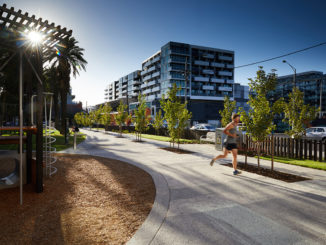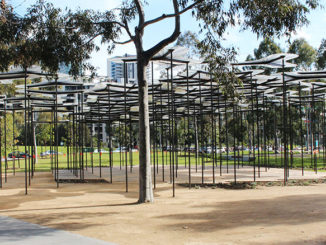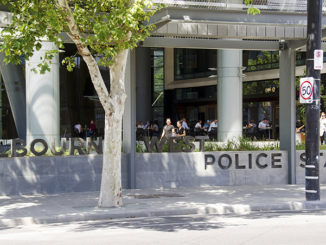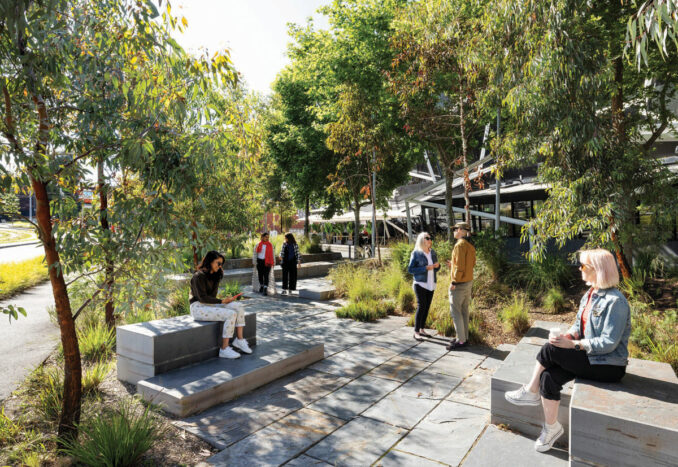
Transforming Southbank Boulevard is an ambitious, council-led project that enhances the vitality and livability of one of Melbourne’s most densely populated suburbs. The project has transformed part of an arterial road into five new civic spaces, each delivering on the needs of the local community, creating an ecologically rich gateway with over 400 new trees and climate-responsive understorey planting at the heart of the Melbourne Arts Precinct, Southbank Promenade, and Yarra River – Birrarung. Significantly, the project has reallocated 22,000m² of public space for pedestrians, cyclists, and children of all abilities, genders, and ages.
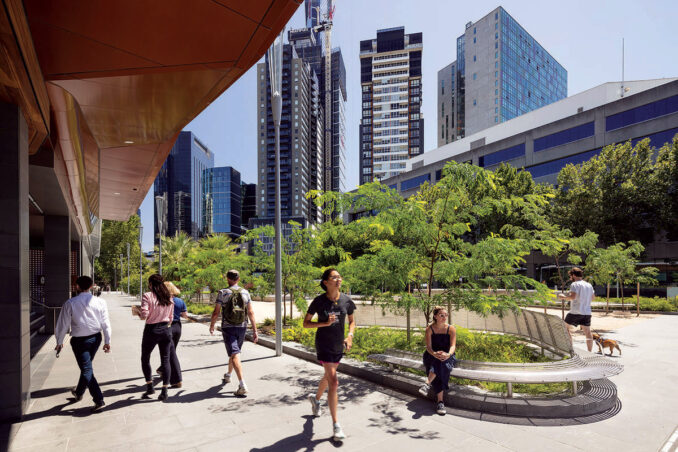
Southbank, one of Melbourne’s most densely populated suburbs, had the least amount of public open space per person in the municipality – 2.5m² per person compared to the municipal target of 21m². With over 96% of Southbank’s population living in apartments, access to outdoor space was limited, compounded by major arterial roads blocking residents’ access to existing open spaces. The challenge was to strategically adapt the urban environment to meet the changing community needs, address growing populations, and tackle climate change by reclaiming and reimagining underutilized grey infrastructure while prioritizing local needs, pedestrian and cycle connectivity, climate, and biodiversity.

The City of Melbourne developed a concept design in 2017, outlining the design intent for the staged project. TCL was engaged for detailed design and documentation of 4 out of 5 connected spaces, with City Design providing review. The final space was collaboratively designed by City Design and artist Mike Hewson. A 3-stage engagement process ensured the design was informed by public input. The design incorporated themes of transport mode shift, ecological and urban forest connections, legibility, identity, cultural links, and public art. Courageous innovation led to the reduction and realignment of the road, providing quality public space, and setting a new precedent.
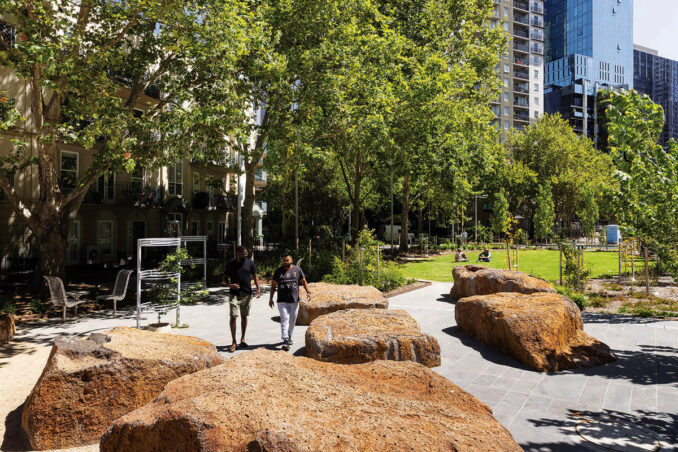
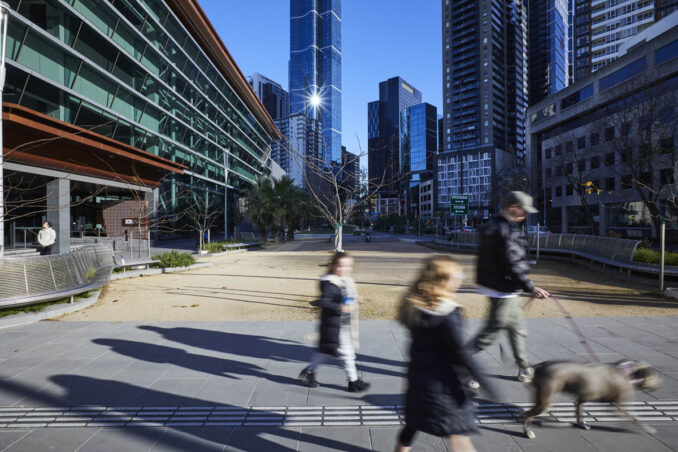
Transforming Southbank Boulevard demonstrates the long-lasting and positive impact of strategic place making design on the community and environment. The project has enhanced livability, supports the community’s health and wellbeing, and provides opportunities for social connections in a dense urban setting. It has created an ecologically rich gateway with 400 new trees, climate-responsive planting, and public space for diverse users. The project supports sustainable transport and connections to nature, aligning with the City of Melbourne’s Urban Forest and Nature in the City strategies. It sets a precedent for converting arterial roads into community spaces and pushes boundaries in play design, contributing to the advancement of landscape architecture, urban design thinking, and the understanding of placemaking in Australia.
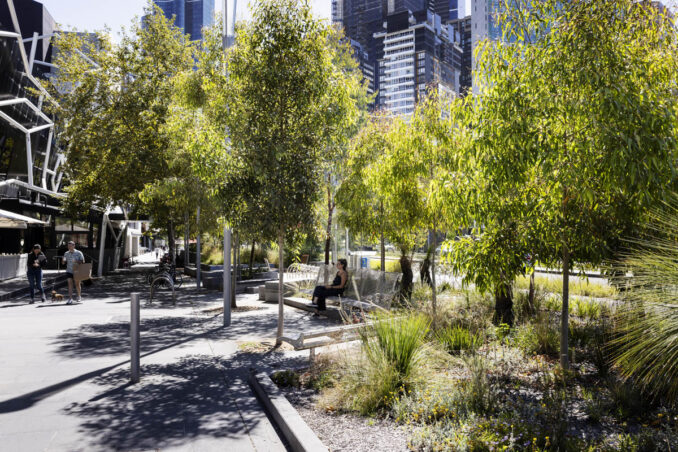
The Southbank Boulevard project was predicated on finding innovation in landscape architecture and rethinking best practices to achieve a powerful new urban living experience in Melbourne. The conversion of an arterial road into a local road, enabling the reallocation of space for public use, while not a new concept was done with a comprehensive yet seemingly unseen touch. The resultant project seems as though it was always there, cohesively blending into the high-profile area as part of the fabric and character of the neighbourhood. The design pushes boundaries in play, integrating public art and challenging typical remits of ‘playground’ typology. The City of Melbourne’s partnership with Yarra Trams to trial ‘green’ tram tracks and climate-responsive tree species demonstrates innovative thinking and a commitment to environmental sustainability. These unique and imaginative solutions advance the profession of place making and landscape architecture design, revealing the project rather than interjecting it onto the site’s topography.
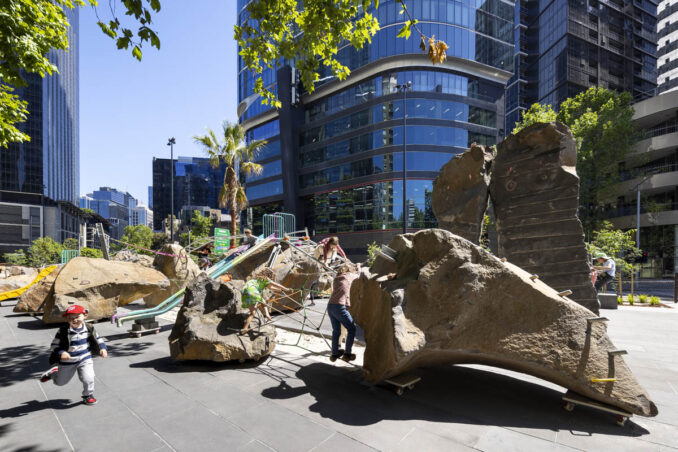
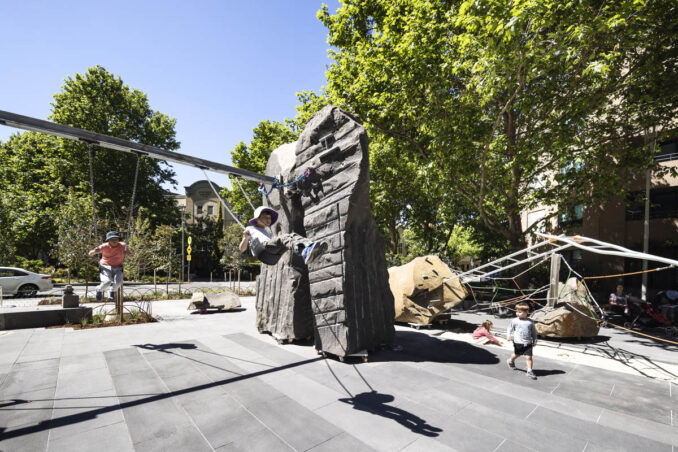
Transforming Southbank Boulevard achieves an outcome that is long-lasting and brings positive impacts on visitors, local residents and office workers, and the environment. The project improves the quality of life for all who utilise it by providing much-needed public open space, supporting the need for “greening” the health and wellbeing practices people require, and fostering new social connections in a dense urban setting. The reallocation of 22,000m² of space for pedestrians, cyclists, and children of all abilities, genders, and ages demonstrates a commitment to measurable space utilisation outcomes and creating a more inclusive and accessible city. The project’s ecological richness, with 400 new trees and climate-responsive planting, contributes to environmental sustainability and resilience. As an exemplar of good design in landscape architecture and urban design, Transforming Southbank Boulevard inspires positive change, drives greater demand for placemaking through courageous design, and contributes to a better, safer, and more prosperous future for the community.
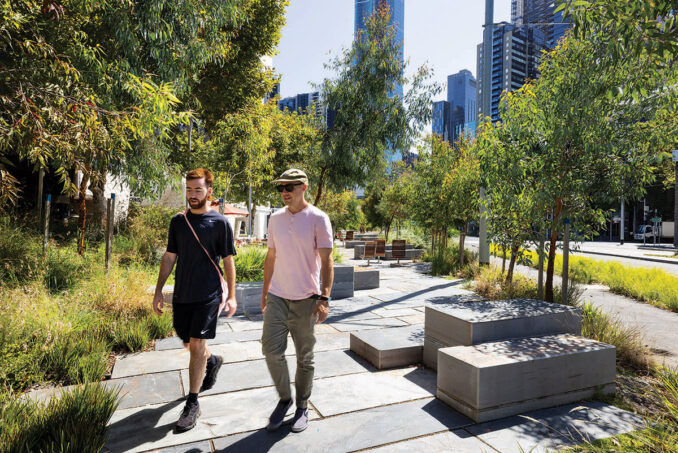
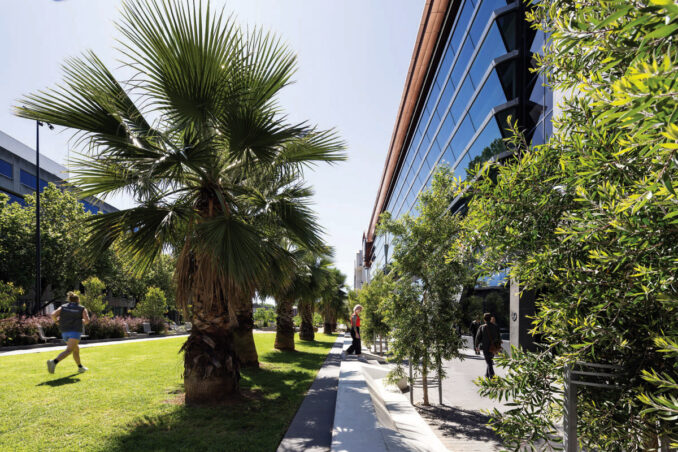
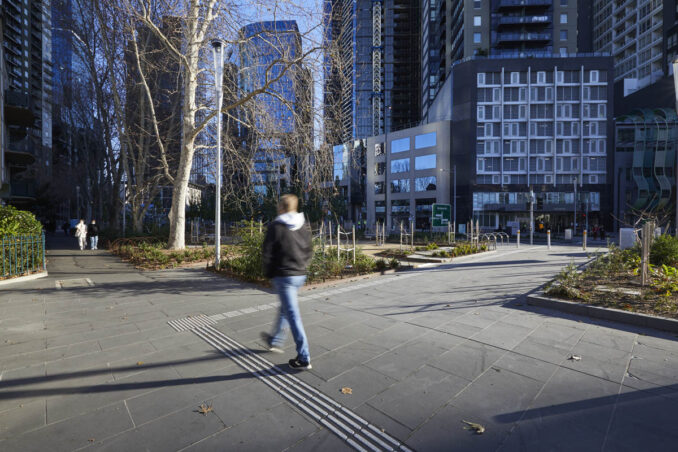
Transforming Southbank Boulevard
Designers: City of Melbourne with TCL & Mike Hewson
Collaborators: Paul Thompson (Planting Design)
Photography: Diana Snape, Jocelyn Chiew, Mike Hewson

